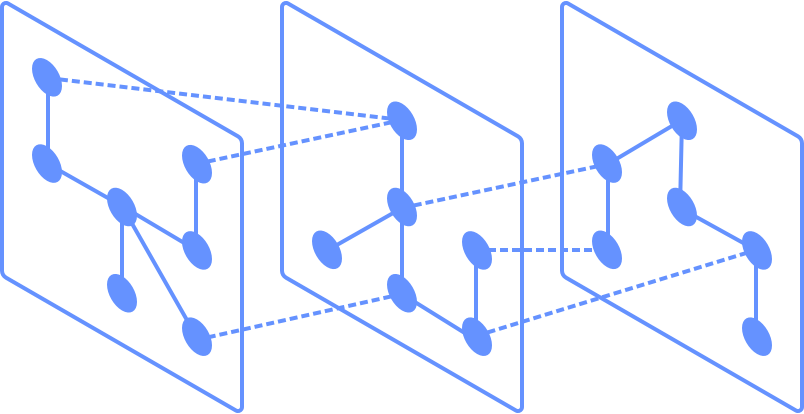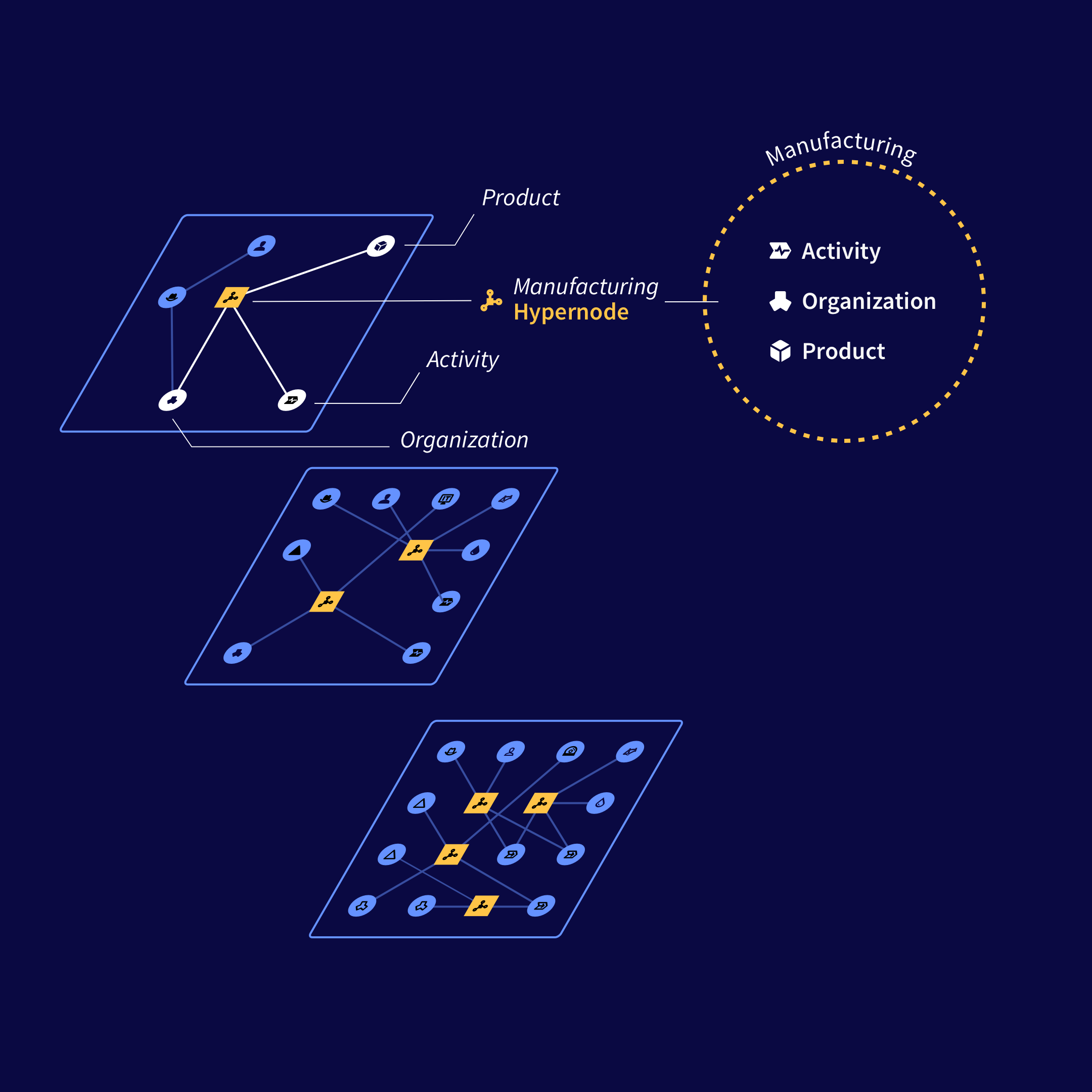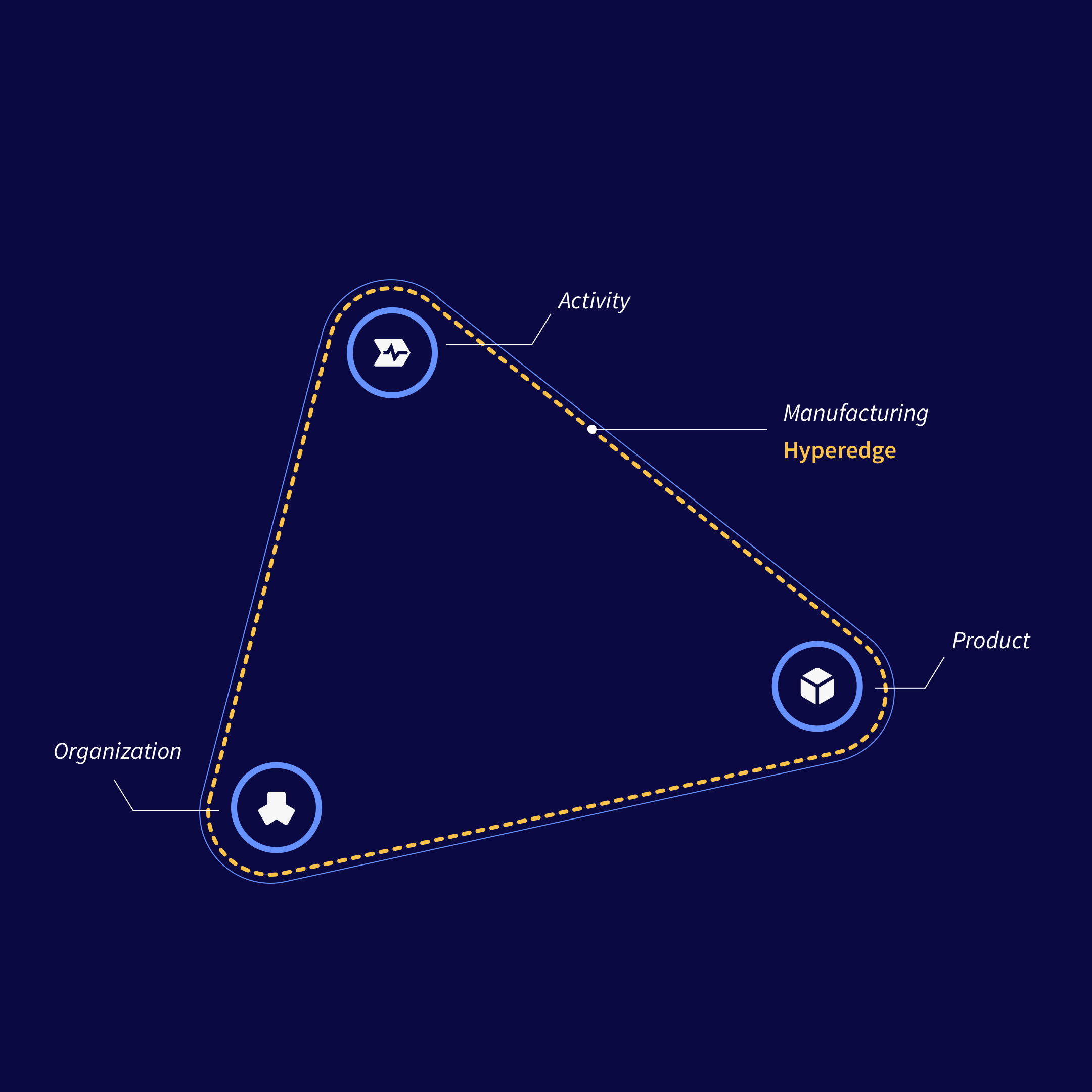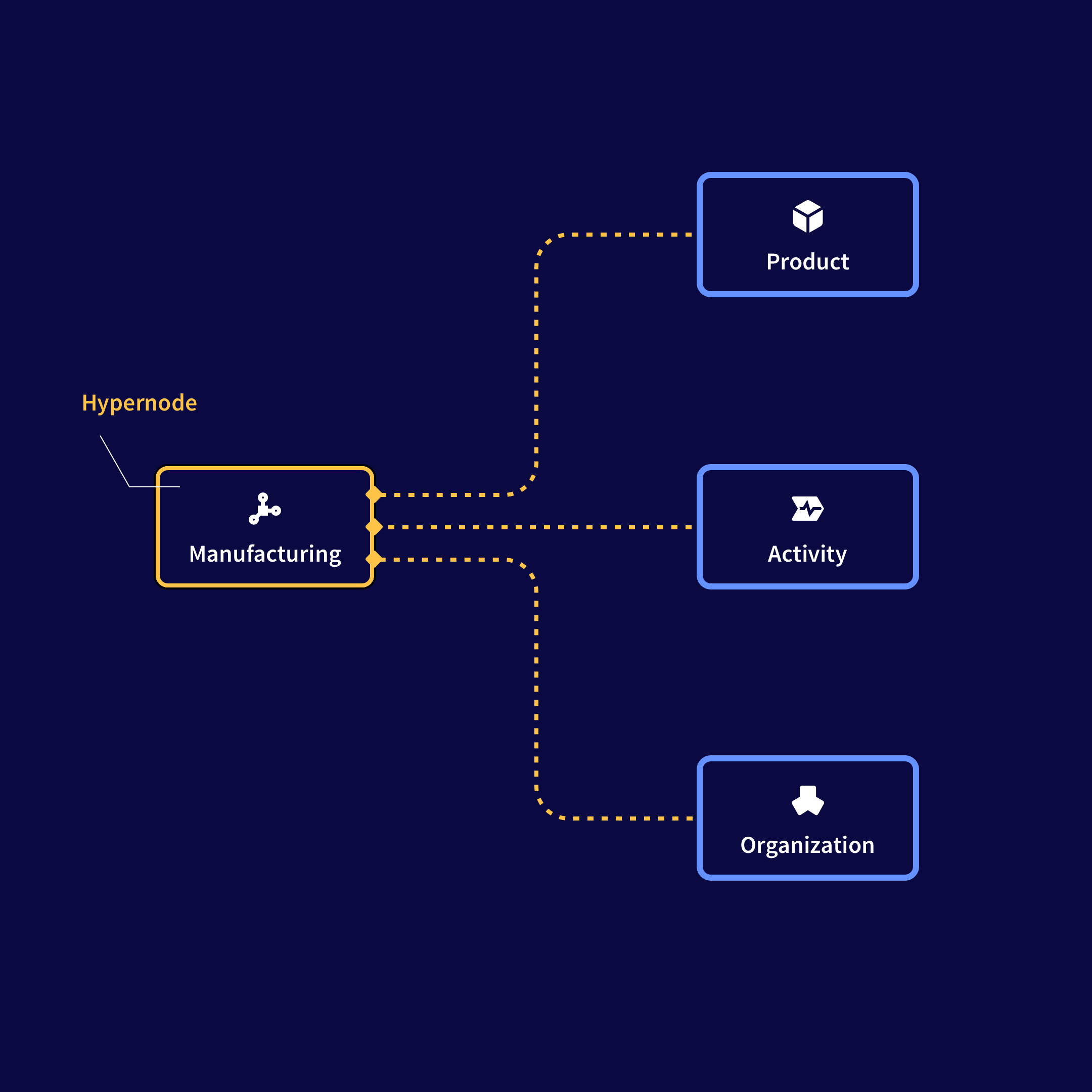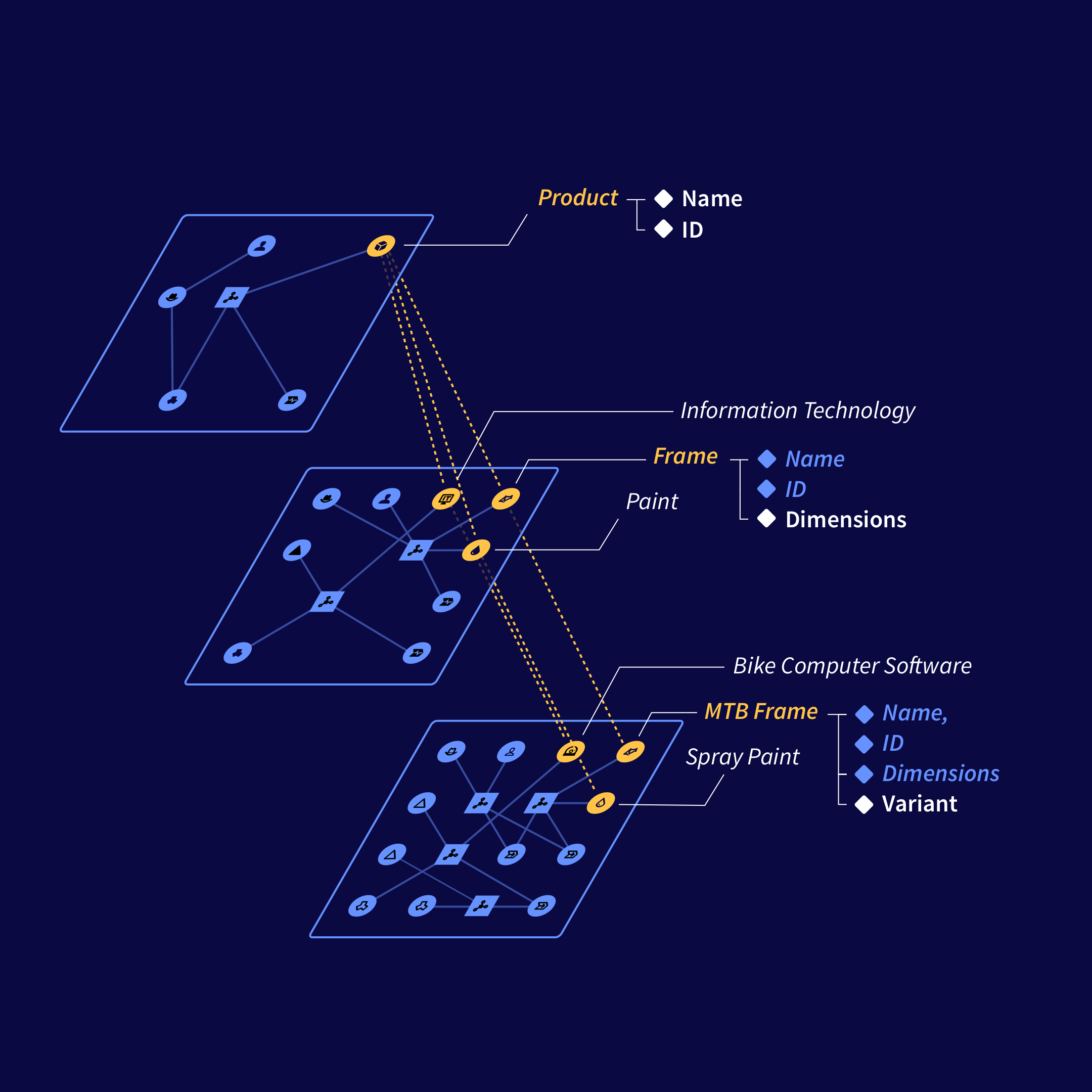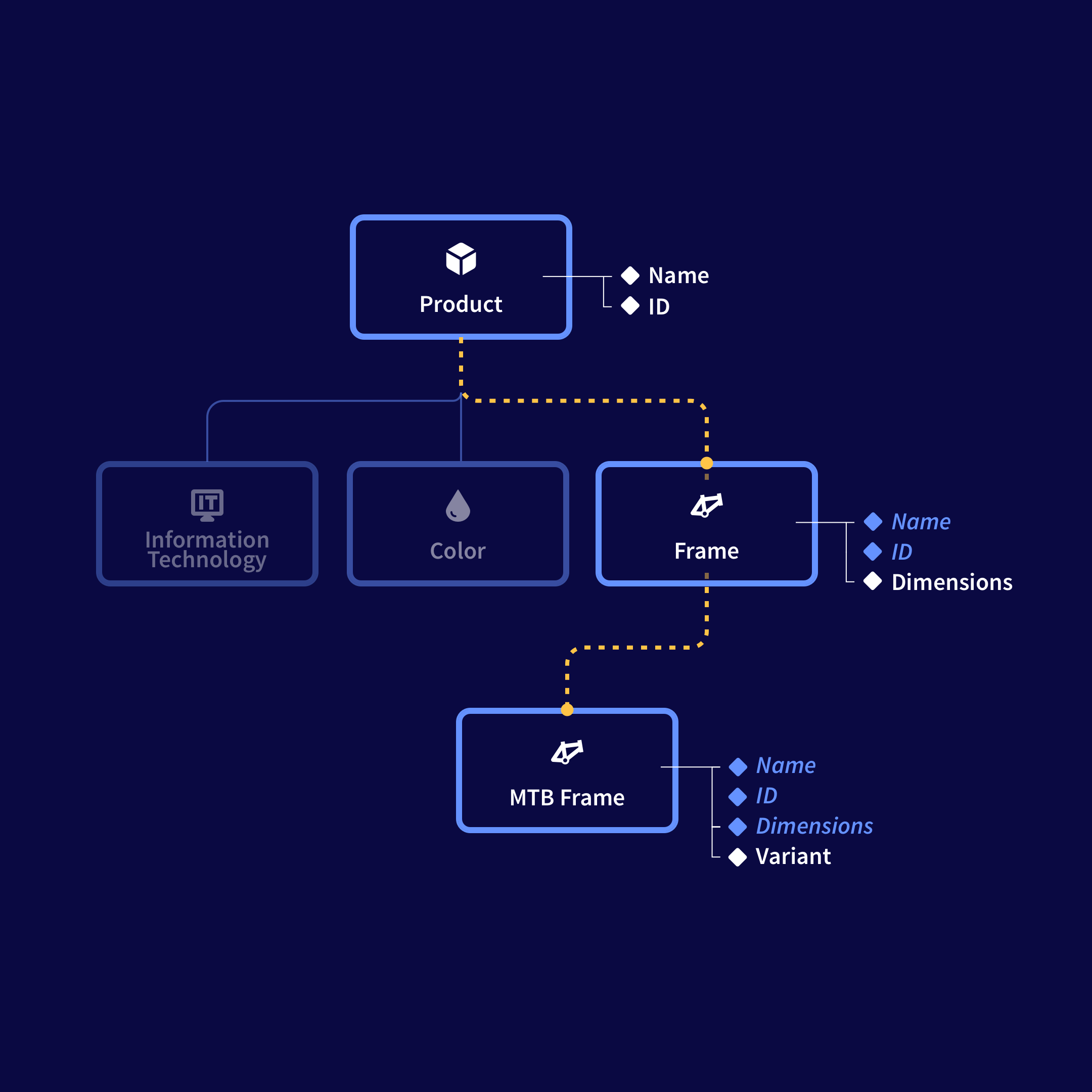An Introduction To Metagraphs
The universal challenge that organizations are faced with is an ever-growing amount of data and information, paired with increased complexity and diversified inflexible systems. Something that most software and database technologies are unable to handle today.
This is where Metagraphs will make a huge impact. It is a disruptive technology with the capability to solve the intricate challenges of evolving data ecosystems.
What is metagraph technology?
Metagraph technology transitions from conventional bottom-up, case-by-case graph analysis to comprehensive graphs representing the essential complexity at different levels of abstraction over time.
Unlike traditional graphs, primarily used for unraveling complexity, metagraphs are designed to primarily address essential complexity at its source.
Metagraph technology encompasses metagraph theory, practical metagraph modeling, and metagraph database storage. This gives it a unique perspective compared to traditional graph technology.
It is designed to reflect intricate multi-dependencies horizontally and multiple abstraction levels vertically – efficiently and intuitively.
A Prerequisite For Digital Sustainability
Regardless of industry or public sector, any large organization will be challenged with overviewing and governing all of its data. This is true for any combination of products, services, resources, or people. Various expert systems like PLM, MRP, and ERP are implemented to manage specific processes or domains.
But while they are often complementary, there will always be an overlap of data between systems – and this will eventually lead to data that is duplicated, irrelevant, and obsolete. To solve this you must have a system that can handle master data and metadata across multiple domains. A model that can handle the various levels of abstraction, scale without breaking, and integrate with existing systems. This is where Metagraphs excel.
Think of it as a Map of Maps: It allows you to hold the information about both trees and the forest – but also the ecosystem that links them.
Multi-Relationships
The multi-relationship capability is based on hypergraph theory. Hypergraphs, a generalization of graphs, represent multi-dimensional dependencies, unlike conventional graphs that handle only pairwise dependencies.
This capability is valuable in fields with prevalent multi-dimensional cross-dependencies, such as the design, configuration, and simulation of complex businesses and their value propositions, as well as in intricate business environments.
inorigo’s® metagraphs handles this by introducing the concept of Hypernodes, which are advanced structures capable of connecting an arbitrary number of nodes.
This capability transcends the limitations of both traditional graph-based models and hypergraphs by facilitating the construction and management of complex relationships. Unlike traditional nodes and hyperedges, hypernodes simplify the visualization and oversight of intricate models, thereby reducing maintenance overhead and improving the clarity of data interconnections.
Multilevel Abstraction
Abstraction, in general, refers to the process of simplifying complex systems by focusing on the most relevant aspects while ignoring or hiding unnecessary details. Multilevel abstraction takes this idea further by recognizing that complex systems must be designed, understood, and analyzed at different levels of granularity.
Multilevel abstraction enables encapsulation, modularization, and full traceability between layers, providing valuable insights at each level.
It incorporates classification and composition which is crucial for creating, configuring, simulating, and understanding complex systems. Classification structures (taxonomies) and compositional structures with cross-dependencies form the backbone of the metagraph model and are essential for building a scalable digital ecosystem.
Multilevel Abstraction: Classification
Classification, often referred to as taxonomies enables the inheritance of properties in a metagraph model. It ensures that changes made at the abstract level are automatically reflected in the derived entities, thus facilitating sustainable model evolution over time without necessitating manual updates to each individual object.
This feature streamlines the model management process, making it more efficient to propagate updates and maintain consistency across the model.
Multilevel Abstraction: Composition
The composition capability in inorigo® metagraphs enables the definition of complex structures with embedded rules and conditions that govern the assembly and variation of services or products.
This capability allows for the dynamic generation of product variants and service configurations based on predefined criteria.
It supports the management of cross dependencies and the enforcement of business rules at various levels of the model, enabling organizations to adapt quickly to changing market demands or regulatory requirements.
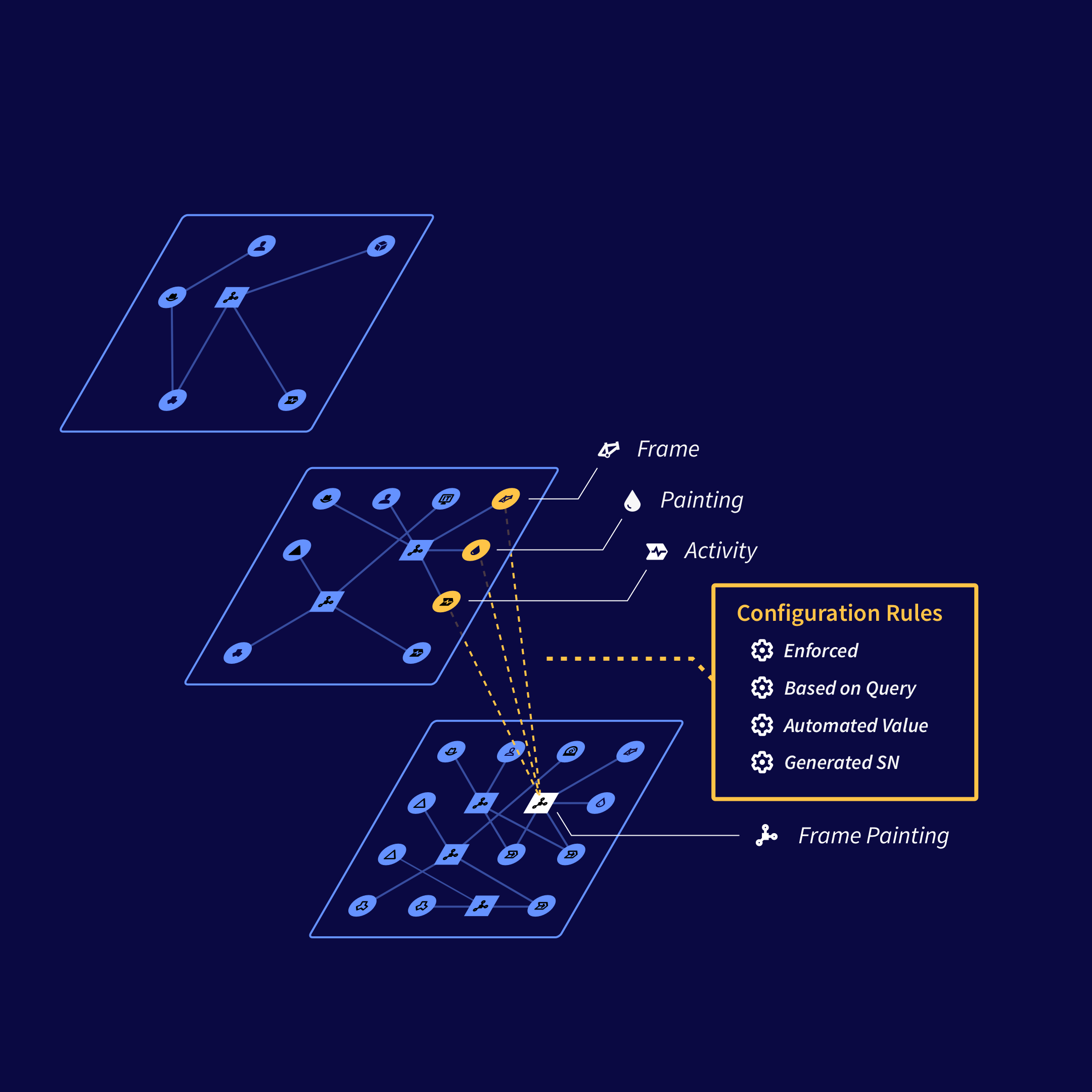
Composition
In the example we have three nodes ‘Frame’, ‘Paint’ and ‘Activity‘ that together composes the new activity Frame Painting.
Through configuration rules it is possible to define the conditions how these nodes can be combined.
For instance certain colors or dimensions might be exclusive to a specific frame. Property values may be automated or enforced, serial numbers generated etc.
This also allows for automatically generating all possible variants of ‘Frame painting’, facilitating creating BOM’s and specifications.
